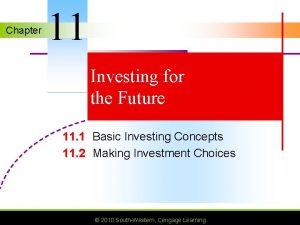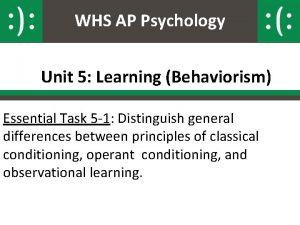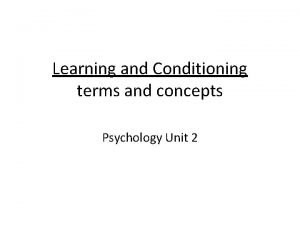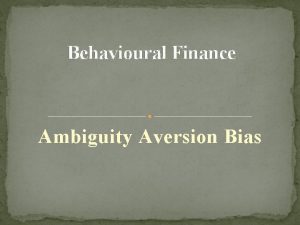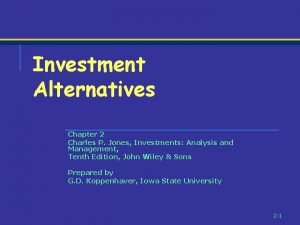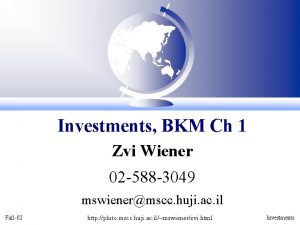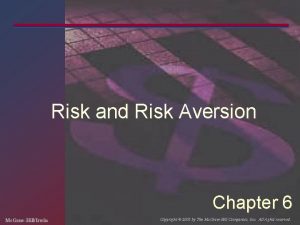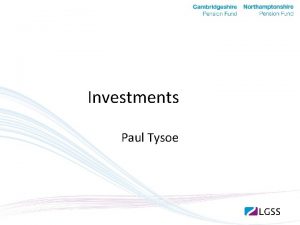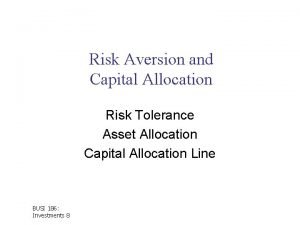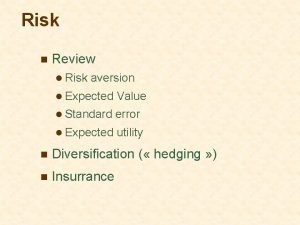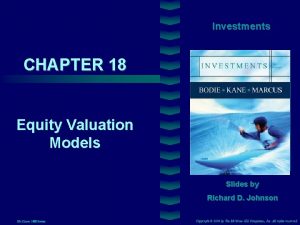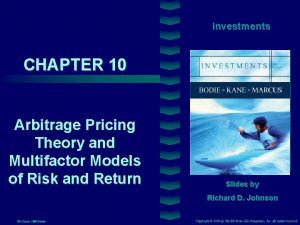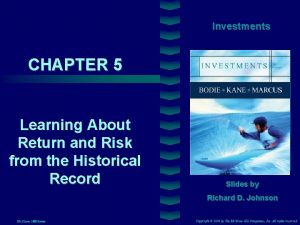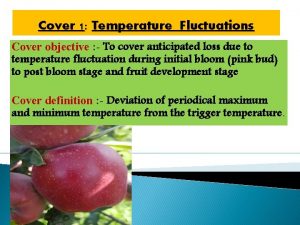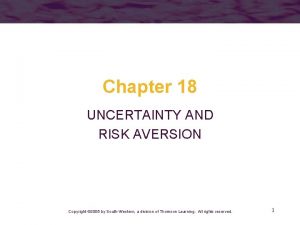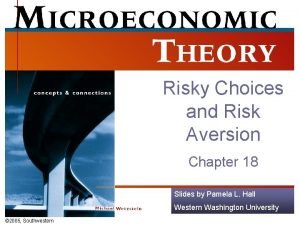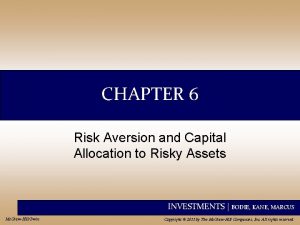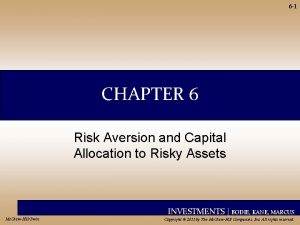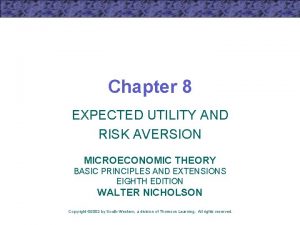Investments CHAPTER 6 7 Cover image Risk Aversion






















- Slides: 22

Investments CHAPTER 6 & 7 Cover image Risk Aversion and Capital Allocation to Risky Assets Slides by Richard D. Johnson Mc. Graw-Hill/Irwin Copyright © 2008 by The Mc. Graw-Hill Companies, Inc. All rights reserved

Table 6. 1 Available Risky Portfolios (Risk-free Rate = 5%) Cover image 1 - 2

Utility Function U = E ( r ) – 1/2 A 2 Where U = utility E ( r ) = expected return on the asset or portfolio A = coefficient of risk aversion 2 = variance of returns Cover image 1 - 3

Table 6. 2 Utility Scores of Alter. Portfolios for Investors with Varying Risk Aversion Cover image 1 - 4

Figure 6. 1 The Trade-off Between Risk and Returns of a Potential Investment Portfolio Cover image 1 - 5

Figure 6. 2 The Indifference Curve Cover image 1 - 6

Table 6. 3 Utility Values of Possible Portfolios for an Investor with Risk Aversion, A = 4 Cover image 1 - 7

Allocating Capital: Risky & Risk Free Assets Ø It’s possible to split investment funds between safe and risky assets. Ø Risk free asset: proxy; T-bills Ø Risky asset: stock (or a portfolio) Cover image 1 - 8

Example Cover image rf = 7% rf = 0% E(rp) = 15% p = 22% y = % in p (1 -y) = % in rf 1 - 9

Expected Returns for Combinations E(rc) = y. E(rp) + (1 - y)rf rc = complete or combined portfolio For example, y =. 75 E(rc) =. 75(. 15) +. 25(. 07) =. 13 or 13% Cover image 1 - 10

Combinations Without Leverage If y =. 75, then c =. 75(. 22) =. 165 or 16. 5% If y = 1 c = 1(. 22) =. 22 or 22% If y = 0 c =0 (. 22) =. 00 or 0% Cover image 1 - 11

Capital Allocation Line with Leverage Borrow at the Risk-Free Rate and invest in stock. Using 50% Leverage, rc = (-. 5) (. 07) + (1. 5) (. 15) =. 19 c = (1. 5) (. 22) =. 33 Cover image 1 - 12

Figure 6. 4 The Investment Opportunity Set with a Risky Asset and a Risk-free Asset in the Expected Return-Standard Deviation Plane Cover image 1 - 13

Figure 6. 5 The Opportunity Set with Differential Borrowing and Lending Rates (0. 15 -0. 09)/0. 22 (0. 15 -0. 07)/0. 22 Cover image 1 - 14

Table 6. 5 Utility Levels for Positions in Risky Assets for an Investor with Risk Aversion A = 4 Cover image 1 - 15

Figure 6. 6 Utility as a Function of Allocation to the Risky Asset, y Cover image 1 - 16

Figure 6. 7 Indifference Curves for U =. 05 and U =. 09 with A = 2 and A = 4 Cover image 1 - 17

Figure 6. 8 Finding the Optimal Complete Portfolio Using Indifference Curves Cover image 1 - 18

1 - 19 Ø y* = (E(rp) – rf ) / (0. 01*A* p 2 Cover image

Capital Market Line Ø Passive strategy: portfolio decision that avoids any direct or indirect security analysis Ø CML: investment opportunity set that generated by a passive strategy Cover image 1 - 20

Table 6. 7 Expected Returns on Four Indifference Curves and the CAL Cover image 1 - 21

Table 6. 8 Average Annual Return on Stocks and 1 -Month T-bills; S. Dev. and Reward to Variability of Stocks Over Time Cover image 1 - 22
 Risk aversion indifference curve
Risk aversion indifference curve Holding a variety of investments to reduce risk
Holding a variety of investments to reduce risk Put and take account
Put and take account Market risk assessment
Market risk assessment Ap psychology behaviorism
Ap psychology behaviorism Inequality aversion
Inequality aversion Ivan pavlov classical conditioning
Ivan pavlov classical conditioning Endowment effect and loss aversion
Endowment effect and loss aversion Pavlov dogs
Pavlov dogs Behavioural finance
Behavioural finance Evaluation of aversion therapy
Evaluation of aversion therapy Aversion therapy evaluation
Aversion therapy evaluation Alternative cover test
Alternative cover test Vike vicente
Vike vicente Maddox rod test procedure
Maddox rod test procedure Kieso chapter 17
Kieso chapter 17 Under ifrs the presumption is that equity investments are
Under ifrs the presumption is that equity investments are Chapter 2 investments
Chapter 2 investments Chapter 11 real estate and other investments
Chapter 11 real estate and other investments Equity method vs cost method
Equity method vs cost method Financial investment analysis
Financial investment analysis 02 588
02 588 Investments bodie kane marcus
Investments bodie kane marcus


